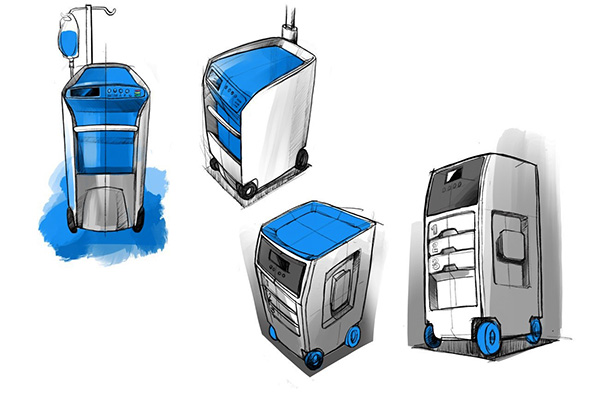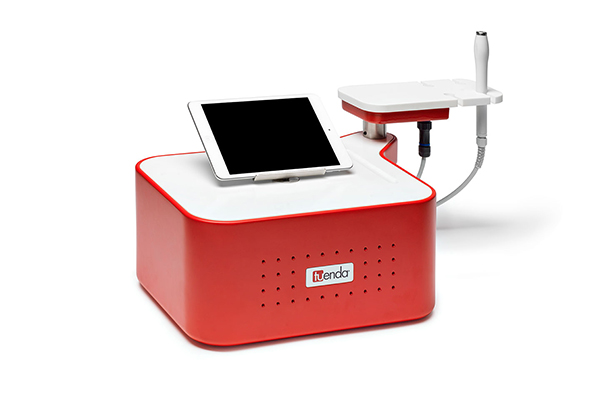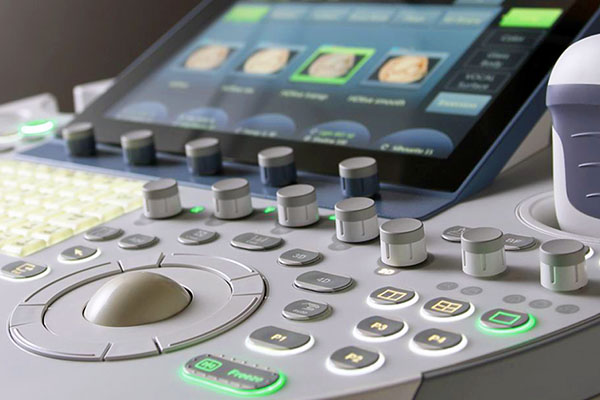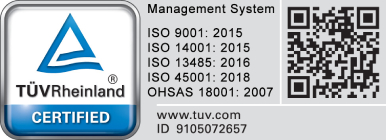As we all know, devices used in medicine and healthcare must meet the highest standards of performance and reliability. This is as it should be, but medical products are more than merely practical tools or appliances. Although there are many different types and applications, to the greatest degree possible they also must satisfy human emotional and aesthetic requirements as well. And that’s where inspired designs comes in.

We’re going to look at the top five design principles that the smart product engineer should keep in mind when creating new solutions for safeguarding health and well-being. Using these tips will help your next project to be easier to use, safer and more successful in the marketplace.
1. Make it Easy to Clean

Depending on their use, medical products may be exposed to bodily fluids, alcohols, acids and reagents, as well as biologicals like viruses and bacteria. Therefore any product in such an environment must be easily cleaned, and this necessity will in turn affect the product’s design.
It’s common for many products to be made via plastic injection molding, and that means there will be housings and enclosures separated by minor gaps. If these are unavoidable, then there are a few mitigating strategies to consider. Actual sealed gap should be as tight as possible, although these seams can be covered with overlapping features or false covers if necessary. Gaps that are exposed should be accessible to at least a fingertip for wipe down, again depending on the environment where the product will be exposed.
Better still is to sidestep this issue in the initial design. Be wary of ribs, recesses, tight radiuses, pockets and other features that are hard to access. Sharp internal right angles should be eliminated or re-designed with larger and more gradual curvatures. Overall it’s best to favor unified designs that present a single unbroken flat or convex face that offers the minimum opportunity for dirt to collect.
Those surfaces should also have a smooth texture and be non-porous so they can be swabbed, sprayed or wiped with cleaners. If there are internal mechanisms these must be carefully sealed against contamination as well.
2. Make it Easy To Hold

In a hospital or clinical environment you will rarely find any rough or abrasive textures. Instead, if a product is meant to be held in the hand, it should neither be too smooth nor too sticky. Holdable shapes are meant to fit the contours of the human hand while providing good tactile feedback without needing a tight grip. Matte or softly sanded textures serve this function well but they also have a visual appeal.
3. Make it Easy To See

Softer textures and colors tend to diffuse and absorb incidental light. Think about most doctor’s offices or hospital rooms. They usually have ambient blue/white fluorescent lighting that provides a uniform illumination. Metals used in this kind of space therefore tend to be sandblasted or etched and other surfaces – including wood or plastic – are rarely polished or glossy.
All of these design choices help to support a visual environment without sharp highlights, strong contrasts, reflections or glare that can be both physically and emotionally taxing in potentially stressful situations.
4. Keep it Simple

More medical products are being used in the home for diagnostics and convalescent care. To aid in their use by non-professionals, and to prevent possible mistakes, these should be as user-friendly and foolproof as possible. A good way to do this is to simplify the design so that its proper function is implied by its shape. And this shape should also be useable only in one correct way, while being impossible to apply in some other fashion. So simple, in fact, that even someone who has had no instruction would be able to pick it up and immediately know how to hold it and what it’s for.
Another good idea is to make buttons large and single-function. If there are critical features, these must be easy to spot quickly so that they can be accessed in emergency situations without thinking. In this regard, the smart use of color can also be a big help.
5. Use Color Intelligently

Color can be used to communicate information, to classify that information and to guide the user in the correct use of a product.
For example, strong colors can immediately differentiate important or even dangerous functions (red/yellow) from safe ones (green or blue). Gradations of hue, descending from darker to lighter, also help to denote hierarchies of priority. Colors can define sections or zones on a product which are useful guides or reminders about proper usage.
And of course color has a strong emotional connection. Vibrant colors add energy and stimulation, and this might be employed in healthcare products related to fitness or activity. In other situations, bright primary colors are fun and attractive to children, while warm colors like golds and yellows impart a feeling of calm in prenatal settings meant to inspire nurturing.
Light greens and blues are associated with growth and the natural world, and these are more common in surgical and clinical settings along with soft pastels and off-whites. Conversely, bright reds and oranges in the wrong setting would be too strong and unsettling.
Want to learn more?
Star Rapid has years of experience helping customers bring medical innovations to market. We will bring this same experience to your next medical project when you contact us today for a free quotation and design review.
Star gratefully acknowledges the work of Forma Medical Device Design in providing invaluable information for this article: https://www.formamedicaldevicedesign.com/
[/et_pb_text][/et_pb_column][/et_pb_row][/et_pb_section]







